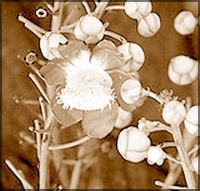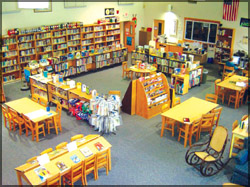|

Irrigation development project
The constrution work on the irrigation development project involving
100 large and small tanks in Anuradhapura, Kurunegala, Puttalam and Matale is to be speeded up so
that the project is completed by 2010.
Anuradhapura, Kurunegala, Puttalam and Matale is to be speeded up so
that the project is completed by 2010.
The project titled Pro-Poor Economic Advancement and Community
Enhancement Project (PEACE) was initially planned for completion within
seven years, but has now been restructured to be completed within four
years. Its 'Wewu Pubuduwa' project is jointly carried out by the Sri
Lankan and Japanese Governments.
The project will rehabilitate 80 minor irrigation tanks as well as 20
major tanks, such as Rajangana, Nachchaduwa, Nuwarawewa and Tissawewa in
the Anuradhapura district and Magalla, Ambakolawewa, Atharagalla and
Palukadawala in the Kurunegala district.
The project also accounts for other development activities such as
water management, empowering farmers societies, providing guidance for
starting and maintaining self-employment ventures and improving
marketing facilities.
The project would also provide infrastructural facilities such as
transport and potable water to the colonies coming under the scheme.
More than 25,000 farming families will become the direct
beneficiaries of the completed project, with additional irrigational
facilities to nearly 50,000 acres of land. It would cover an area of
6,500 square kilometres.
Growing sal trees
Almost all of you would know what a sal tree (Shorea robusta) is.
It's a large tree bearing very beautiful and fragrant flowers and holds special significance for Buddhists as Prince
Siddhartha was believed to have been born under a sal tree in Nepal.
fragrant flowers and holds special significance for Buddhists as Prince
Siddhartha was believed to have been born under a sal tree in Nepal.
The Department of Botanical Gardens has imported one kilogram of sal
(also known as Indian sal) seeds from Nepal and the seeds have now grown
into saplings in the Department's nursery. These saplings will be
distributed among botanical gardens, temples and other places of
importance throughout the island in a move to propagate(reproduce) the
tree in the country.
National Science Week
The Cabinet has granted approval to a memorandum submitted by Science
and Technology Minister, Prof. Tissa Witharana on the declaration of a
National Science Week and World Science Day next month. The National
Science Week will be a week of activities organised by different
associations promoting science and technology.
The National Science Foundation, which popularises science among the
public, will organise the National Science Week. It will be held from
November 5 to 10 under the theme 'Our Technology for Our Development'.
The World Science Day will be observed on November 10.
A treasure trove of information
Most of you would be members of your school library and enjoy the
facilities and services offered by this vital component of a school.
component of a school.
Why do we say that the school library is vital? Because you can get
access to a world of information outside your textbooks through the
various sources of information available in your school library.
They promote skills for information literacy and lifelong learning.
Among these skills are reading and literacy skills as well as skills of
finding and working with information.
It has been revealed through various research that students achieve
more academically when they have access to a school library with a good
collection and strong educational programme. Students have also been
shown to become better readers when they have quality books to read.
The importance of school libraries in the education of children is
recognised when the International School
Libraries Day is observed on
October 22. The event is observed in many schools around the
world, with special activities being organised for both teachers and
students.
The special day is co-ordinated by the International Association of
School Librarianship (IASL) with various local organisations.
The mission of the IASL is to provide an international forum for
those interested in promoting effective school library media programmes
as viable instruments in the educational process. It also provides
guidance and advice for the development of school library programmes and
the school library profession.
Its worldwide membership includes school librarians, teachers,
library advisers, consultants, educational administrators, and others
who are responsible for library and information services in schools.
The membership also includes professors and instructors in
universities and colleges where there are programmes for school
librarians, and students who are undertaking such programmes.
White Cane Day for the visually-impaired
An important event that was celebrated around the world recently was
International White Cane Day,
which fell on October 15.
on October 15.
You may have seen the white cane being used by people on the street.
This familiar white cane with a red band at the bottom is used by blind
and visually impaired persons in many countries.
Do you know how this white cane, which is now a symbol of the
visually impaired, come into being? In 1921, James Biggs, a photographer
from Bristol, England became blind following an accident. Because he was
feeling uncomfortable with the amount of traffic around his home, he
painted his walking stick white to be more easily visible.
In the United States, the introduction of the white cane is
attributed to Lion's Club member George A. Bonham. In 1930, he observed
a blind man trying to cross the street with a black cane that was barely
visible to motorists against the dark pavement. Bonham offered to paint
the cane white to make it more visible.
By 1931, his Lions Club branch had approved the project and white
canes were made and distributed. The news of the club's activity spread
to other Lions Clubs, and the white cane became known by the blind and
sighted alike as a means of identifying the safe mobility needs of the
visually impaired.
In 1931, Lions Clubs International began a programme promoting the
use of white canes for people who are blind.
Also in 1931, in France, Guilly d'Herbemont recognised the danger of
blind people in traffic and launched a national "white stick movement"
for blind people. She donated 5,000 white canes to people in Paris.
While the white cane is commonly accepted as a "symbol of blindness",
various countries have different rules concerning what constitutes a
"cane for the blind."
In the United Kingdom, for example, the white cane is recognised as
being used by visually impaired persons; if the cane has two red bands
added, it indicates that the user is deaf and blind. In some areas, the
cane is yellow. Those carrying white canes are afforded the right of way
when crossing a road and when in a public place.
The International White Cane Day was declared by the President of the
International Federation of the Blind in 1970. The Day is of special
significance to Sri Lanka since it was first declared on Sri Lankan soil
at the Second Convention of the International Federation of the Blind.
The event provided a platform to highlight issues concerning the
visually handicapped, mobilise programmes and obtain support for
implementation. This year too, a series of activities were organised in
Sri Lanka as well as other countries to mark this day.
Gimhani's sixth book
The sixth book by 11-year-old schoolgirl Gimhani Upeksha Waduge,
titled 'Mysterious Experiment' was launched recently. Her latest work is a translation of a science fiction
book titled 'Le Pipasaya' which had been written by her grandfather
Haritus Warusavithana in 1963 when he was an Advanced Level student.
launched recently. Her latest work is a translation of a science fiction
book titled 'Le Pipasaya' which had been written by her grandfather
Haritus Warusavithana in 1963 when he was an Advanced Level student.
Gimhani translated and edited the book for which the illustrations
have been done by her art teacher H.C. Ratnayake. A Grade 7 student of
Carmel Girls' Central College, Chilaw, Gimhani is a regular contributor
to many children's newspapers and magazines including the Junior
Observer.
Her first book, 'Three Little Girls and Their Pets' was published
when she was just nine years old. She followed it with four more books
in an amazingly short period of 18 months. She won an award in Shankars
International Children's Competition for Writing in 2006.
Books for Jaffna children
UNICEF has ensured the distribution of school kits to every school
student at the request of the Ministry of Education in the Jaffna
Peninsula.
Head of UNICEF's Education section in Sri Lanka, Ita Sheehy, said the
month-long distribution had reached an estimated 140,000 primary and
secondary schoolchildren, all of whom are affected by the ongoing
conflict.
"It was a challenge because Jaffna has been cut-off by the conflict
from the rest of Sri Lanka for more than a year," said Sheehy. In
addition to the Education Ministry, the distribution was carried out
with the support of the military, the Government Agent, the Commissioner
General for Essential Services, as well as the teachers and students
themselves.
Many schools had been recycling materials in an effort to keep
children supplied. Materials in the distribution included notebooks,
drawing pads, pencils and pens, rulers, erasers and sharpeners. |
